Razer Viper V3 HyperSpeed Review
A stunningly fast gaming mouse at a reasonable price

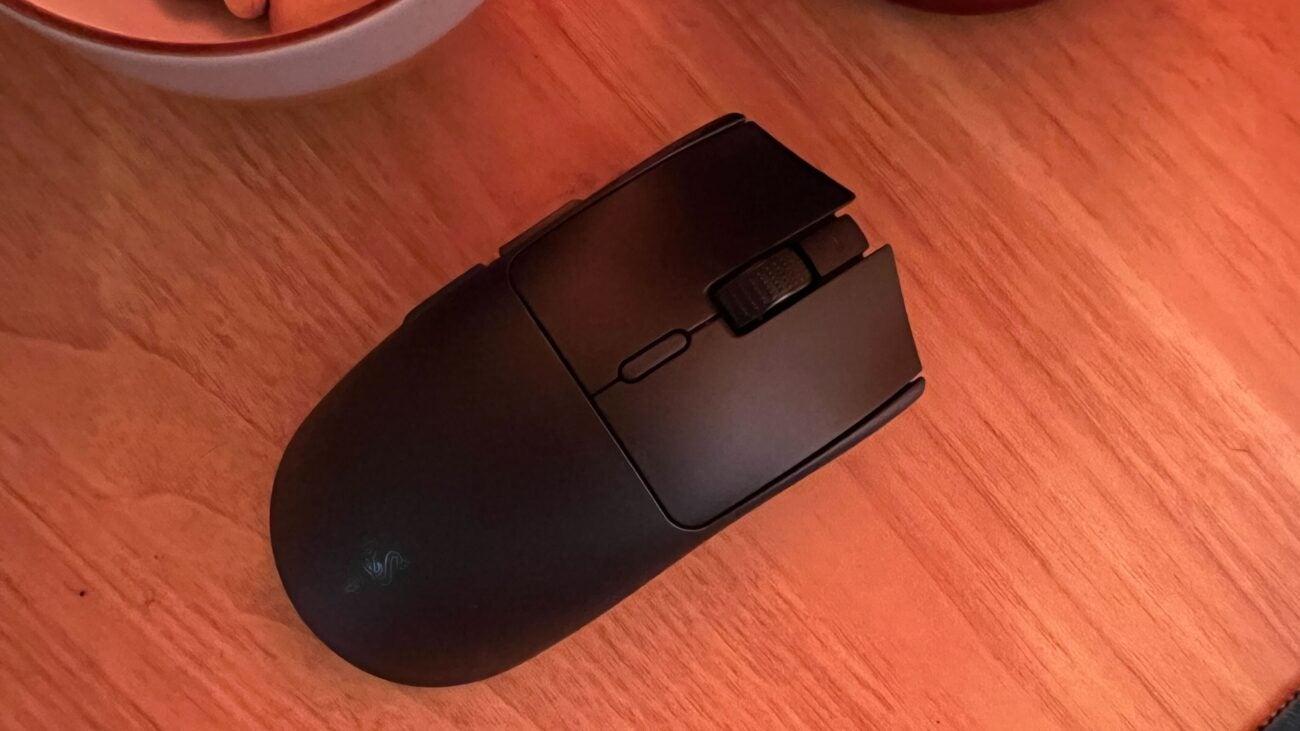


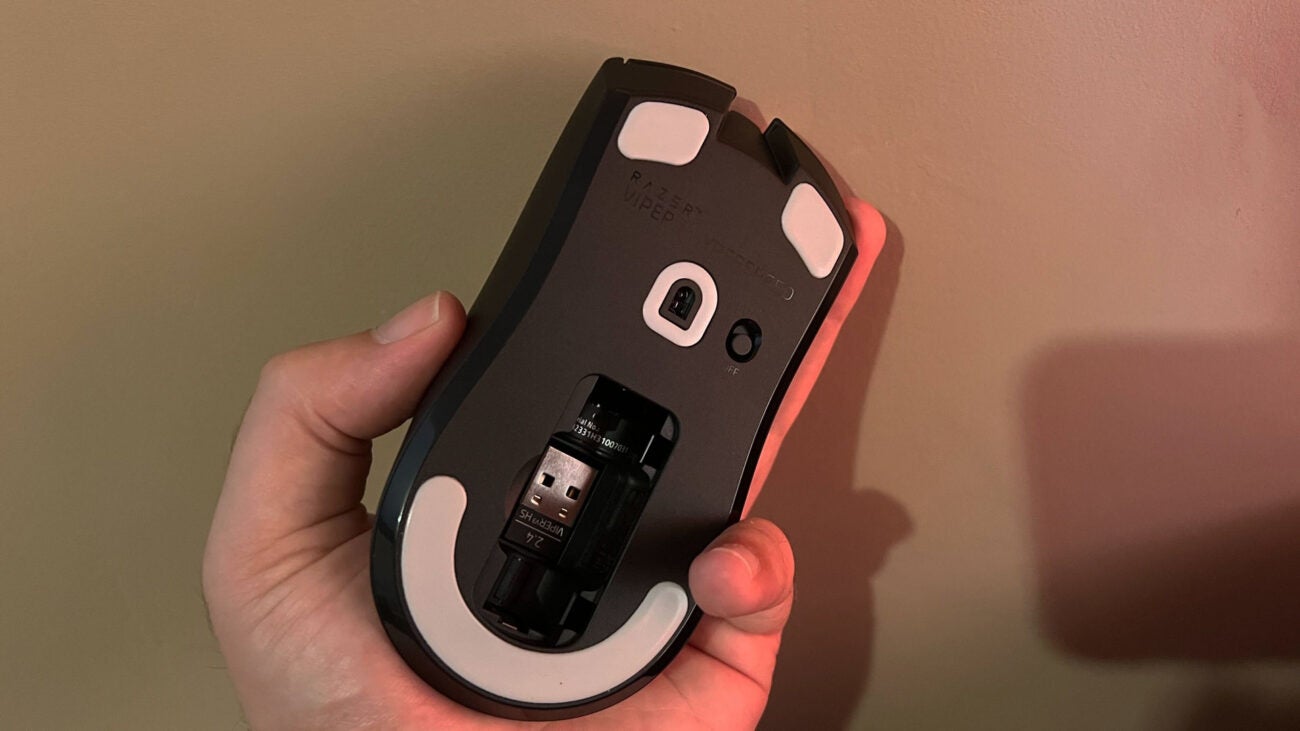

Verdict
If you want an excessively speedy mouse but don’t want to annihilate your post-rent paycheck, the Razer Viper V3 HyperSpeed is a rock-solid option. It’s certainly not for everyone, sliding into a particular pro-level niche, but it’s a compelling piece of kit for the right hand.
Pros
- Huge battery life
- Compact and lightweight design
- Decent price
Cons
- No Bluetooth
- No support for cabled use
Key Features
- Extremely fastThe Razer Viper V3 Hyperspeed’s Focus Pro optical sensor caps out at an exceedingly high DPI ceiling
- Long battery lifeA single AA battery can power the mouse for almost 300 hours.
- Slim and light designEven after taking the weight of a battery into account, the small footprint of Razer Viper V3 contributes to a lightweight feel
Introduction
Mouse manufacturers are gunning hard to put on the most exceedingly high-speed mice they can right now. The benefits of DPI counts continuing to climb towards a six-digit sum aren’t always obvious. But if there’s one major factor the Razer Viper V3 HyperSpeed has going for it, it’s the ultra-competitive price.
The latest iteration of Razer’s flagship esports mouse is hard to look away from when sitting on a store shelf with its rivals. By keeping things ultra slim and ridding itself of a few potentially unnecessary bells and whistles, it’s undercutting the competition by a significant margin.
In terms of performance, it’ll always be hard to compare it to another without personally going hands-on with both for an extended period. But the gap between a good and a bad gaming mouse is starting to become indistinguishable anyway. On looks and price alone, this one’s a winner. So long as you don’t need much else.
Design
- Low-profile body
- Simple, sleek design
- Subtle branding
Even with an initially high-arched silhouette from a side view, the Razer Viper V3 HyperSpeed is a slim, low-profile mouse. Its tiny footprint compared to something like the cheaper Razer Mamba line means it isn’t everyone. After all, it’s in the name, too. Just about.
Billed as an esports mouse as per some small text on the box, that’s pro gamer code for “fast.” Speed-focused mice are built small and light, typically meaning they shed form and function for the sake of reliability and top-tier accuracy.
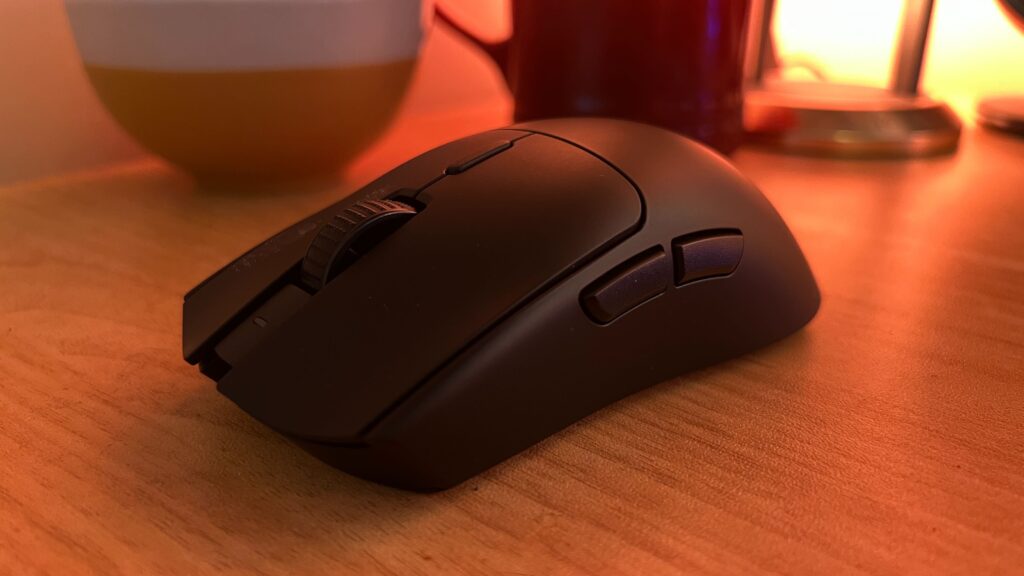
In reality, the Razer Viper V3 is a paired-down version of what came before. With the necessary AA battery slotted in, it weighs quite a bit more than the V2 at around 82g based on your average cell, which does put it on the heavier side of the recent trend of lightweight FPS-focused mice. Other than the battery and the device itself, the packaging is all easily recycled with your general paper waste.
It uses the same 30,000 DPI Razer Focus Pro optical sensor on the bottom, but it sheds a lot of core features – including the latter’s oft-hyped optical switches. Blue
What is also sheds, for better or for worse, is the previous edgy design. Gone are the harsh lines and boxy shape that made the Viper V2 stand out on the table. Instead, Razer has elected to take on the current juggernauts of the esports space, using a sleek, simple, and rounded design similar to that of the Logitech G Pro series of clickers.
Designed for either a claw or fingertip grip, it’s not one for the grabby palm grip gamers out there. It’s just not large enough at the back to suit that sort of hold.
For the rest of you, its curves are gracious, slowly sloping down to the concave groove of the primary buttons and falling suddenly to facilitate a strong guide for your thumb and ring finger to control those minute movements from the flanks. It’s a little sharp once you fall outside of that center area, but you’ll certainly know you’re locked in and ready to go.
If you like ergonomic curves around the sides for that more sculpted feel, you might prefer something like the Roccat Kone Pro Air, which is often found at a similar price these days.
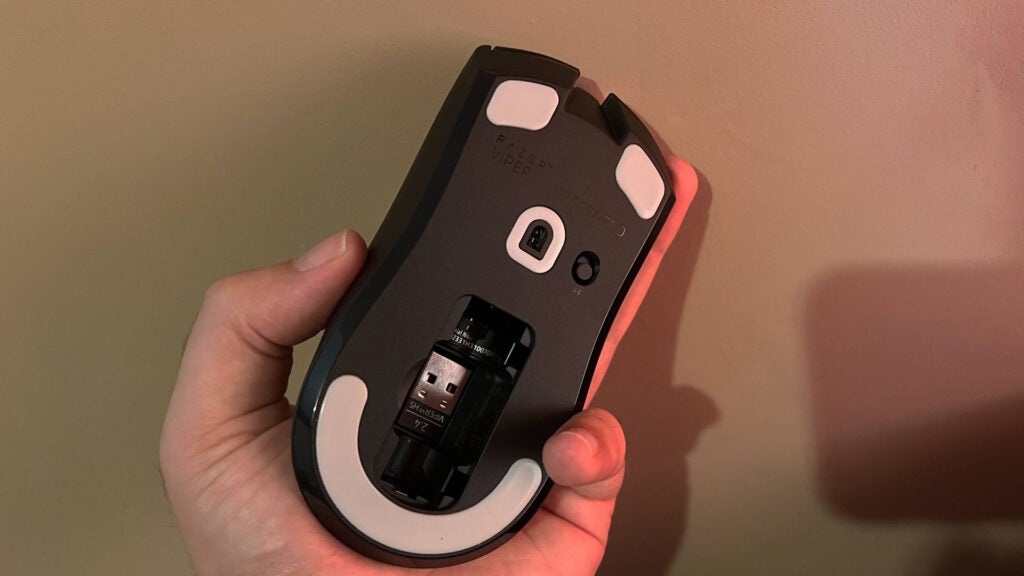
Unlike the Razer Orochi and more like the rest of the maker’s designs, this one is right-hand only. The two relatively small side buttons are present only on the left side. As per usual, a DPI toggle between the two primary clicker is there to switch between presets and profiles. There’s no light and right click on the mouse wheel either, keeping the whole package simple when it comes to macro capabilities.
The matt finish makes it hard to even see the iconic Razer logo on the palm grip. There’s no illumination to highlight the brand. If you absolutely must have the Razer look, don’t mind a wire, and play at a lower DPI setting, the Viper 8K is probably the wiser buy for around the same price. And if it’s just a high polling rate you’re after, the HyperX Pulsefire Haste 2 can save you some good money.
Performance
- 30,000 DPI
- Up to 4,000Hz polling
- 280 hour battery life
Where it counts, my time with the Razer Viper V3 HyperSpeed was without issue. Granted it’s only been a couple of weeks and this cheaper alternative to the Razer Viper V2 Pro drops a few long-term durability claims.
Even still, in battle, things have performed admirably, with my casual runs of World War Z, efforts to get back into Halo Infinite, and some low-tier tinkerings with Valorant and Counter-Strike 2 never once feeling hampered by the slim clicker beneath my hand. Dabbling in some StarCraft 2, Diablo 4, or something slow and steady like Cities: Skylines II won’t be a problem.
With the included wireless receiver plugged into the back of my monitor, I experienced no sense of lag, delay, jitter, or signal loss. The same can’t be said for the Razer Naga Elite Wireless I used a year or two back in the same manner.
I have no personal need for 30,000 DPI. Barely anyone does. Even seeing it as a forward-facing solution for a problem that’ll arise as screen refresh rates and resolutions continue to climb, it’s hard to see it as anything more than a buzzword.
I’m perfectly happy in the sub-2k DPI range on a 1440p 144Hz panel – but we’ll see how things change when I eventually move up to a gaudy 240Hz ultrawide OLED in the near future. I have no reason to doubt it, and neither should you. For a good comparison set, check out the best gaming mice of 2023 so far.

Out of the box, the 280-hour battery life on a single AA is pleasing to hear, with the default 1000Hz polling being a welcome touch, too. If you’re able to make use of up to 4000Hz polling, however – something that’s largely recommended as refresh rates climb – you might want to spend a little extra to get the Hyperpolling dongle.
It’s not all good news, though. The ability to essentially overclock the V3 HyperSpeed via the optional receiver means dramatically reducing the mileage of that single AA cell. It’s nice to have the option to stick with your trusty sidekick should you want to get the absolute most out of your speedy setup, but seeing that sink to an average 75 hours at 4000hz will dramatically increase the odds of a disappointing disconnect (and bump up the ever-increasing cost of ownership).
Another thing that’s nice to see in the Razer Viper V3 HyperSpeed is that it keeps noise to a minimum. Swapping out optical switches for mechanical can sound like a recipe for an obnoxiously loud clicker similar to the group’s divisive Blackwidow keyboards. In reality, the sound from the primary and secondary buttons is clicky, yes, but muted all the same.
And before you go thinking that means it’s a wholly less tactile experience, fret not. Travel distance is virtually non-existent for either set of buttons. They’re sturdy and stabilized enough to avoid changing up your grip.
They’re fast, but not to the point where they feel weak or mushy. And that’s great. They’re still mechanical, though. You’re unlikely to notice the difference, but the laws of physics will technically ensure they’ll forever be slower to register than the optically-aided buttons in the Razer Viper V2.
Software and lighting
- Razer Synapse required for customization
- No lighting
- Five-stage DPI options, lift, and manual reset
With only support for a single onboard profile, running Razer Synapse is a disappointing requirement for this otherwise assuredly simple device.
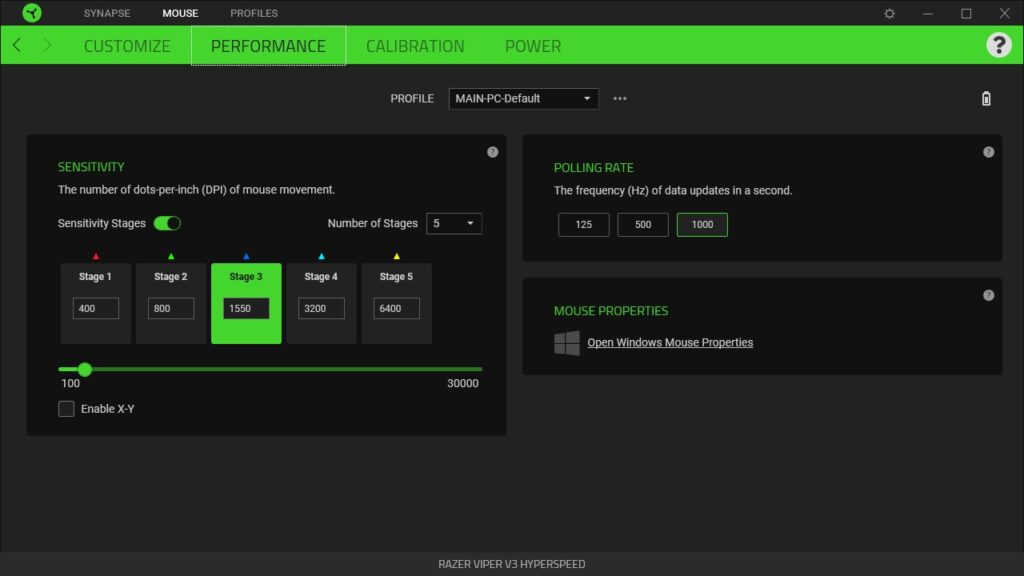
1000Hz polling out of the box means it’s good to go for almost anyone happy dialling in specifics through in-game settings. Which is fair. But if you’re privy to surface lift settings or rely on frequent DPI switching to suit different in-game roles and scenarios, you’ll have to download, log in, and set everything up whenever you move to a new machine. It’ll only store the last-used profile on the device itself.
With only a usage indicator LED in front of the scroll wheel, there’s no customizable lighting to speak of here.
The software situation isn’t nearly as complicated as some of Razer’s closest competitors. That can be viewed as a downside, with too little in the way of customization. But unless you’re spending almost double on a luxury clicker, you’re probably not looking to meddle with too much.
The important factors are all here: DPI stages (with independent X and Y axis options), lift, land, and surface calibration, polling rate settings, and idle timers. The only thing to dislike about the whole situation is how you might need software to dial in your preferred DPI stages in the first place.
Latest deals
Should you buy it?
You want a simple mouse for a complex game
So long as you always have a pack of batteries on your desk, the Razer Viper V3 HyperSpeed could be the only mouse you’ll need for a generation. Just keep your library in check.
You’re a variety gamer too busy to buy batteries
Easily viewed as a clicker for the FPS gamer, you can get a lot more functionality and convenience for a similar price elsewhere if you bench the pro features.
Final Thoughts
In terms of raw price to performance, the Razer Viper V3 HyperSpeed is an ultra-competitive option. It’s just a little limited in what it can do. The lack of Bluetooth support is unlikely to be a dealbreaker, but the lack of a built-in battery, or even just cabled use for emergencies or peace of mind, could be a dealbreaker.
Instead, it’s more likely to appeal to those who appreciate the potential long-term benefits of using disposable batteries in place of a build-in cell that degrades over time. Still, you could end up paying more over time given it’s rated for fewer clicks than the V2. During a common discount deal on Amazon, however? This could be hard to beat, with only the Logitech G502 Lightspeed and Roccat Kain 200 AIMO, with their heavy gamer looks, coming in at a similar price.
Even without a discount, it’s hard to refuse getting largely forward-facing specs for a price so below what the likes of Steelseries, Logitech, and Corsair have been charging for their pro-grade FPS pointers. There’s no doubt they’ll counter with something similar in time, but if you’ve wanted the Razer Viper name without the robotic looks, it’s nice to have the option. Being able to bump things up with an add-on is a nice touch, too. Do check out our best gaming mouse guide, if you’d like more of a browse of the top mice for gamers around.
How we test
Used in a variety of FPS titles over a week.
Tested against many different mice.
Compared to the previous model.
Used as a main mouse for over a week
Tested performance on a variety of games
FAQs
No, and no cable can be used with it.
When travelling, you can keep the wireless receiver underneath the battery slot.
No. You can toggle between five DPI stages but can only alter their values via the software.








